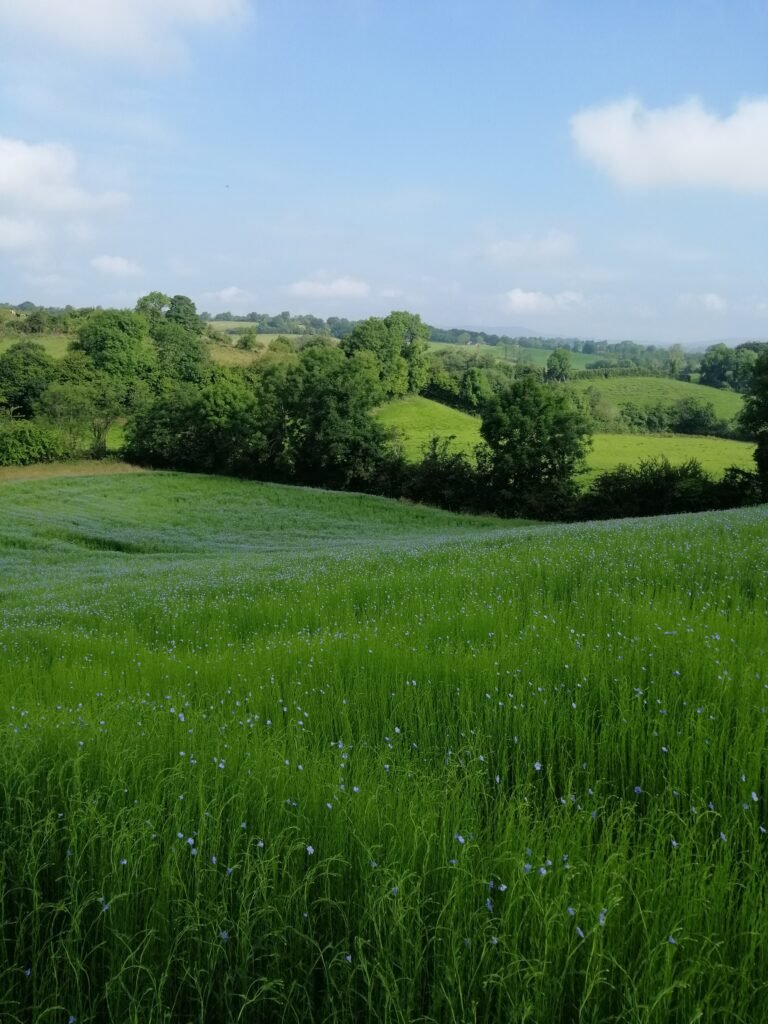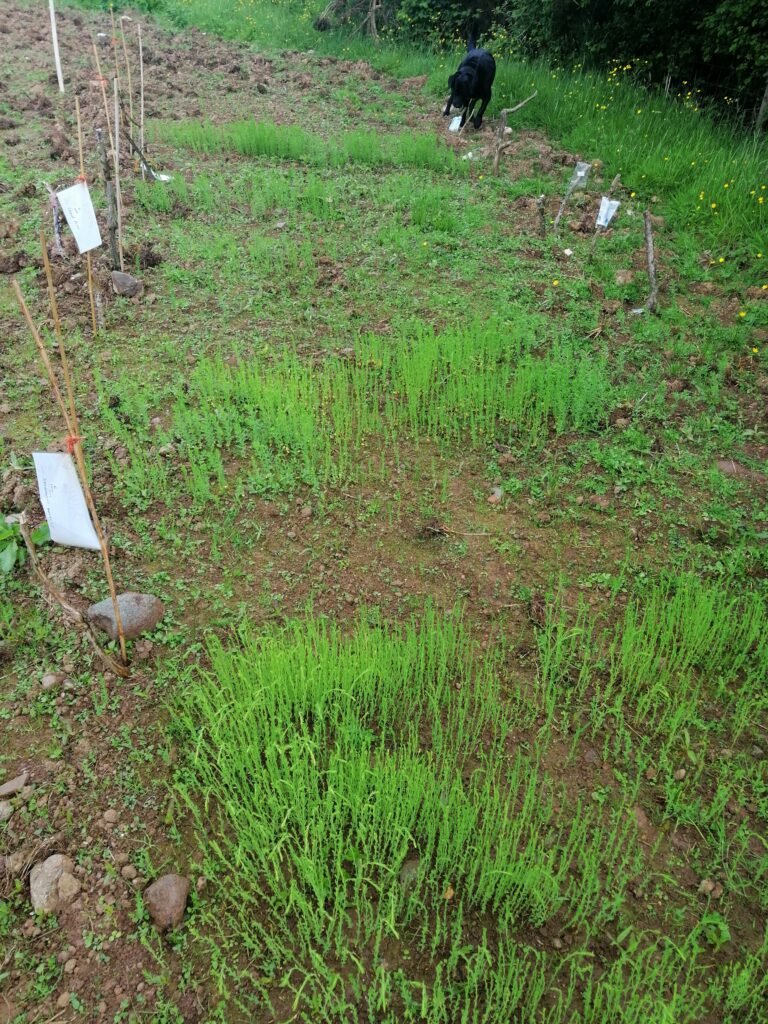
Mallon Farm is around fifty acres and has always been nature friendly throughout its history. It was a mixed farm for years and even when, like many other farms here, it moved more towards dairy, it was never on an intensive scale. We benefit now from all the old meadows, mature trees and hedgerows that have been part of this landscape for generations. Sowing flax for fibre is part of a crop rotation plan for the farm. Flax grows quickly but takes a lot out of the soil in the process, so we don’t plant in the same field again for seven years. We rotate it with other crops such as potatoes, oats and grass.

We’re learning more and more about the importance of our soil. We get a bit obsessed with soil chemistry; the nitrogen, potassium and phosphate levels, but biology and physics are just as important – the worms, bugs, fungus and microbes as well as the structure for healthy plant growth and water drainage.
Our soil varies across the farm in terms of structure, some heavy clay and some sandy. It is all a little bit acidic. Generally we have found the flax grows well most places, but it’s a bit easier to pull in the sandier fields.

One of our biggest learnings from our first year of growing flax, was about the importance of seed variety. We realised that what we had planted was more suited to oil and seed production than textiles. It produced shorter, bushier plants than the varieties traditionally used in linen production. The following year, and every year since, we’ve grown “Lisette” and “Avian”. These produce beautiful tall plants, often measuring more than a metre in height. The process of removing the seeds from the dried seed heads is called “rippling”.

Once the field is ready, we broadcast the seeds using a traditional tool called a fiddle. It has a bag, which is filled with seed and the fiddle is carried over the shoulder. At the front is a ‘bow’, which is moved from side to side, releasing the seeds as we walk up and down the field. But before we can start sowing, we need to work out the seeding rate. For this we use a simple method. We place a sheet with a metre marked on it and do a trial walk past using the fiddle.

We then count the seeds and work out whether we need to adjust the settings on the fiddle. When we are sowing flax for fibre we’re looking for 800 seeds per square metre, so that when we walk north to south, and then walk east to west, the result is 1600 seeds per square metre. After a couple of weeks, the first of the shoots start to emerge and we enjoy watching the field gradually turn from brown to green. Chemicals are unnecessary for this crop when a little time and effort are invested, and we try our best to keep the weeds at bay until the flax is well enough established.

We usually sow in May and after 100 days the crop should be ready for harvest. Along with our main crop, we plant a variety of heritage flax seeds from Irish Seedsavers. The seeds from these plants, some of which were developed specifically for Northern Ireland, will hopefully help build stocks back up. There are some interesting names; Northern Princess, Stormont Gossamer and Stormont Motley, which has both white and blue flowers.

We’re proud to be part of the Nature Friendly Farming Network, a community of farmers dedicated to sustainable farming and environmental protection. We think about these issues in all the decisions that we make on the farm. We look for crops that will be low input and beneficial for biodiversity and flax fits perfectly. Our mission is to restore Irish grown flax and linen in a way that is both environmentally and economically sustainable.
Read more about the full process here

Thanks for this post. As a fiddler (the musical kind) and a flax grower, I’m intrigued in that tool. I have used only broadcast methods so far. I’m also trying to develop a good rotation for a very small farm in New Hampshire in North America.
Thanks! This tool would be perfect for you! All the best with your crops.
Genuinely interesting. Incredible to see the extent of the process and to think that it was commonplace! Thanks for both attempting this revival and documenting it so well.
Thanks so much!